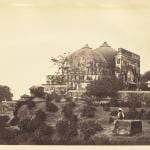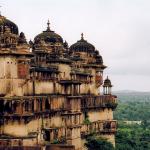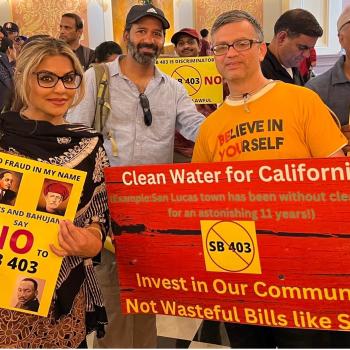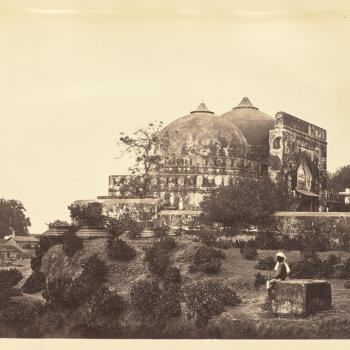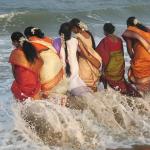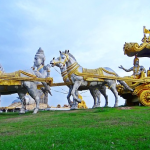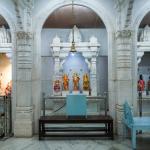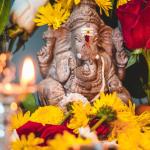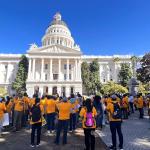In the previous post, I presented the historical context to Babri Masjid. This post is more about the current situation.
Archaeology of Babri Masjid
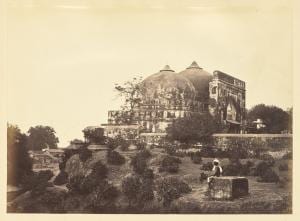
The Babri Masjid structure itself seems to have incorporated many Hindu sculptures etc. from a pre-existing structure. Photographs of such sculptures were submitted in the court in August 2019.
One famous example is an inscription of a Vishnu temple from the twelfth century which was found after the Babri demolition. Arguments were made that this inscription was highly unlikely to have been found in Babri Masjid and that it was probably stolen from a museum and placed there by kar sevaks. The paper said that this was in fact an inscription from Lucknow State Museum and had been missing since the 1980s. This was however denied by the museum, which displayed the piece in a press conference.
In 2003, the Archaeological Survey of India on the direction of the Allahabad High Court, conducted an excavation. The excavation followed a radar survey which showed that there were structural anomalies underground. This radar surveyed was done by the same company that had been involved in similar operations for the construction of the Delhi Metro.
The Supreme Court was approached with a plea asking that excavations not be allowed at the site. This plea was however rejected by the court. The excavation revealed several sculptures, such as that of a yaksha, a cross-legged figure, walls in the east-west and north-south direction, pillars etc. This site in fact had structures dating back to the Gupta and Kushan period, when there were religious structures here. It even found evidence of objects from 1300 BC.
The Sunni Wakf board and many newspapers initially reported that the ASI had found no evidence of a structure below the mosque, and on the same day reported that the ASI was fabricating evidence of a temple. Experts hired by the Sunni Waqf board were also present at the excavation, and criticized the ASI’s methods, claiming that what they had found was not reliable or was tampered with.
Earlier, in 1977, a limited excavation was carried out, which found existence of pillar bases below the area, indicating that another structure had existed there. KK Muhammed, former regional director, North, Archaeological Survey of India was part of the team of archaeologists which had carried out the first excavation at the site in 1976-77. He maintains that there is enough archaeological proof of a grand temple below the Babri Mosque. 12 pillars of the then still standing mosque were made of the temple ruins, according to him.
He says that specific designs were carved on these symbols, such as what is known as the Purna Kalasha, a pot from which leaves and grains are coming out. This is considered one of the 8 auspicious symbols of Indian sculpture.
During excavations, many terracotta figures of humans and animals were found. These cannot be from a mosque because it is ‘haraam’ to depict such things.
Possible British Tampering at Ayodhya
It is claimed by some people that Ibrahim Lodhi built this mosque and not Babur. It is said that there was an inscription on the mosque that explicitly stated this. After the 1857 rebellion, the British decided to create more conflict between Hindus and Muslims. Since a riot had broken out at Ayodhya in 1855 over the worship, they decided to fan the flames of the mosque-Ram Janmabhoomi conflict.
They then removed the Lodhi inscription (and defaced it. It is no longer readable today), and spread the tale that the mosque was built by Babur after demolishing the temple. This would help create a split between Hindus and the last Mughal emperor, Bahadur Shah Zafar.
Evidence would be hard to come by for such tampering, but this is unlikely to be the truth since the British could have just as well fanned the flames with a Lodhi mosque than a Babur mosque. Bahadur Shah Zafar was largely a non-entity by 1857, and most Hindus in Hindustan did not care about him.
Babur’s Atrocities
His name is actually Zahir-ud-din Muhammad, which means Defender of the Faith.
Babur raised towers of skulls when he defeated Rana Sanga in 1527 and later he repeated the same horrors after capturing the fort of Chanderi and Agra. This is recorded in his memoir. This was a common practice among later Mughals, included Akbar.
In his memoir, babur describes his campaigns against the Hindus as Jihad, punctuated with verse and references from the Quran. In his attack of the small principality of Bajaur in present-day Pakistan’s North-West Frontier Province, records Babur: ‘They were put to general massacre and their wives and children made captives. At a guess, more than 3,000 men went to their death.” He ordered that a tower of heads should be set up on the rising ground.
The violence of his conquest can be gauged from his memoir: “neither grain for ourselves nor corn for our horses was to be had. The villagers, out of hostility and hatred to us, had taken to thieving and highway robbery; there was no moving on the roads… All the inhabitants had run away (to jungles) in terror.”
Babur Nama also mentions that there were two major trade-marts near Hindustan at Kabul and Qandahar, where caravans came from India carrying slaves and other commodities to sell at great profits.
He is known to have defaced several sculptures at temples while travelling, for eg. at Siddhachal caves near Gwalior where Jain sculptures were defaced and destroyed, some of which had been created in the 7th Century. He ordered their destruction because the statues were naked.
Guru Nanak was a contemporary of Babur and called him a “messenger of death”. He noted that “the order was given to the soldiers, who dishonored them [women], and carried them away.”
Nanak wrote Babur Vani, in which he gave an account of the atrocities, saying: “Having lifted Islam to the head, You have engulfed Hindustan in dread… Such cruelties have they inflicted… O’ Lord, these dogs have destroyed this diamond-like Hindustan, so great is their terror that no one asks after those who have been killed and yet You do not pay heed…”

